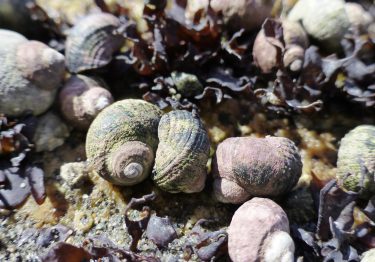
Recognizing the signs of a predator can mean the difference between living to see another day and becoming another critter’s midday snack. All prey animals, whether a swift-footed deer or a slow-moving snail, use cues from their environment to sense the presence of a threat. It’s what keeps them alive — or at least gives them a shot at getting away.
But the specific cues that trigger prey defenses vary depending on the species of prey and their history in the ecosystem, a new University of Washington study finds. The research, published online Jan. 12 in the journal American Naturalist, analyzed the behavior of seven species of marine snails found in Washington waters — three native and four invasive — and discovered that native and invasive snails use different cues to assess risk.
In short, the fear reactions in native snails were more finely tuned, while the invasive snails jumped ship at the first whiff of a threat.
“It’s pretty rare for a distinction between native and invasive species to be as consistent as it is here — which suggests it might hold true in other species and locations,” said author Emily Grason, an invasion ecologist at UW-based Washington Sea Grant who recently completed her doctorate in biology at the UW.
Read more at UW Today »
